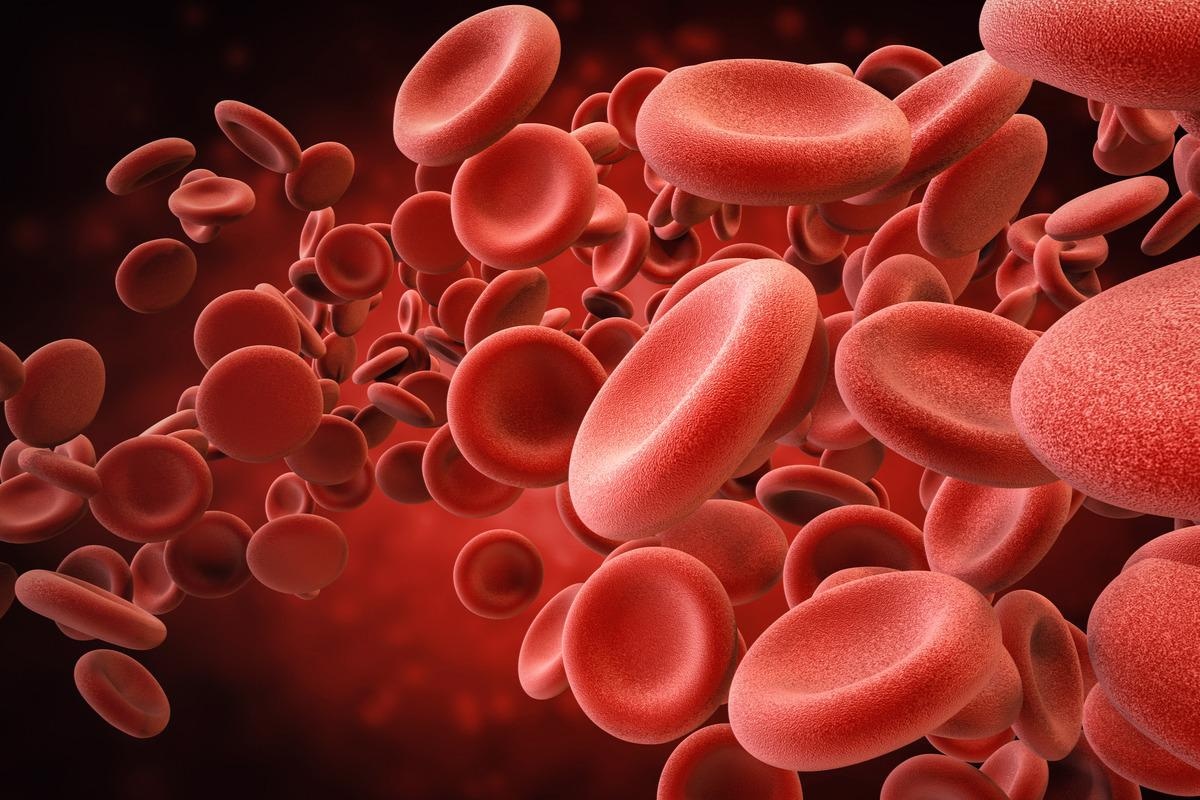Red blood cells are important mediators of the innate immune system. Depending on the cellular environment, these cells either activate the immune system or maintain the system in a dormant state. In addition, red blood cells play vital immunological functions, including chemokine regulation, nucleic acid binding, and pathogen clearance.

Image Credit: Phonlamai Photo/Shutterstock.com
What are Red Blood Cells?
Red blood cells, or erythrocytes, are the major cell types in the circulation, numbering between 20 and 30 trillion. The process of erythrocyte production is called erythropoiesis, which begins in the bone marrow and ends in the circulation. During the process, multipotent hematopoietic stem cells differentiate into erythroid precursor cells, subsequently enucleated to form reticulocytes. In the final stage of erythropoiesis, reticulocytes are released into the peripheral circulation, where they mature into erythrocytes. Mature erythrocytes have a life span of 120 days, after which they are cleared by macrophages in the spleen and liver.
The major and well-established function of erythrocytes is carrying oxygen from the lungs to all body parts via hemoglobin, an oxygen-transporting pigment in erythrocytes.
What are the Immunological Functions of Erythrocytes?
Erythrocytes are recently being identified as vital modulators of the innate immune system. Despite the absence of nucleus and inabilities to perform transcription and translation, erythrocytes can bind to a wide range of inflammatory molecules, including chemokines, nucleic acids, and pathogens.
In erythrocytes, hemoglobin and heme trigger the production of reactive oxygen species (ROS) to destroy and eliminate hemolytic pathogens. These components of erythrocytes also promote inflammation and auto-immune responses.
Chemokine Binding
Erythrocytes bind to chemokines via Duffy antigen receptors and act as a chemokine reservoir to prevent chemokine-dependent recruitment of neutrophils. By suppressing neutrophil signaling, erythrocytes help prevent excessive inflammation and tissue damage. Studies have shown that blood lacking erythrocyte surface receptors (Duffy receptors) exhibits high levels of plasma chemokines after lipopolysaccharide exposure.
An alternative theory of interaction between erythrocytes and chemokines does exist. Evidence suggests that erythrocytes bind chemokines via Duffy receptors superficially and reversibly and subsequently release them in the tissue microenvironment.
These observations indicate that erythrocytes maintain cellular homeostasis by either removing chemokines from inflammation sites or releasing them in tissues in response to reduced plasma chemokine levels.
Nucleic Acid-Binding
Erythrocytes can bind nucleic acids, including mitochondrial DNA (mtDNA). The immunostimulatory CpG motifs in mtDNA bind to toll-like receptor 9 (TLR9) to initiate proinflammatory signaling. Erythrocytes bind and remove mtDNA from the circulation via its surface receptor TLR9. Studies on mice have demonstrated that the absence of erythrocyte-mediated removal of mtDNA leads to increased inflammation and lung injury.
Erythrocytes are known to bind bacterial genomic DNA, malaria parasite-derived mtDNA, and synthetic CpG DNA. During sepsis, plasma levels of CpG DNA increase significantly. The binding of erythrocyte to excess CpG DNA via TLR9 results in morphological alteration of erythrocytes and subsequent erythrophagocytosis via macrophages. Collectively, these processes lead to the development of anemia and induction of both local and systemic inflammation. Studies have shown that increased levels of mtDNA-bound erythrocytes are associated with anemia and disease severity in critically ill coronavirus disease 2019 (COVID-19) patients with pneumonia.
Regarding other types of nucleic acids, genomic RNA from the Zika virus has been found to bind to and persist on erythrocytes for several months. However, the clinical consequences of the persistent presence of viral RNA are not fully known. The recent identification of various TLRs on the erythrocyte surface, including TLR3, suggests the possibility of erythrocyte binding to other types of nucleic acids via TLRs.
Pathogen Binding
Besides cellular components, erythrocytes can bind invading pathogens, including malaria parasites. Erythrocytes bind to these pathogens via different surface receptors, including Duffy antigen receptors and glycophorin A, B, or C.
Glycophorins, especially glycophorin A, act as chaperons to transport pathogens from affected tissues to the spleen to successfully destroy pathogens by macrophages. Importantly, the binding of pathogens (reovirus, influenza C, E. Coli, etc.) to erythrocytes via glycophorins does not induce infection in erythrocytes, further supporting the beneficial effects of erythrocytes on pathogen clearance.
In contrast, the binding of human immunodeficiency virus 1 (HIV-1) to erythrocytes via Duffy receptors leads to persistent viral growth, increasing viral infectivity by many folds.
Nucleated Erythrocytes in Diseases
Nucleated erythrocytes can be detected in the peripheral blood of 10% - 30% of critically ill patients. The condition is associated with poor disease prognosis. About 50% of patients with nucleated erythrocytes eventually die within 1 – 3 weeks. Although the immunological functions of these cells are largely unknown, there is a hypothesis claiming that nucleated erythrocytes appear in the blood as an attempt to release the maximum number of active immune cells into circulation to counteract life-threatening conditions.
The immunological functions of nucleated erythrocytes are well-established in non-mammal vertebrates. In birds, amphibians, and fish, nucleated erythrocytes actively regulate immune responses by producing inflammatory mediators, upregulating viral response genes, and clearing pathogens via phagocytosis.
References
Further Reading
Last Updated: Apr 22, 2022